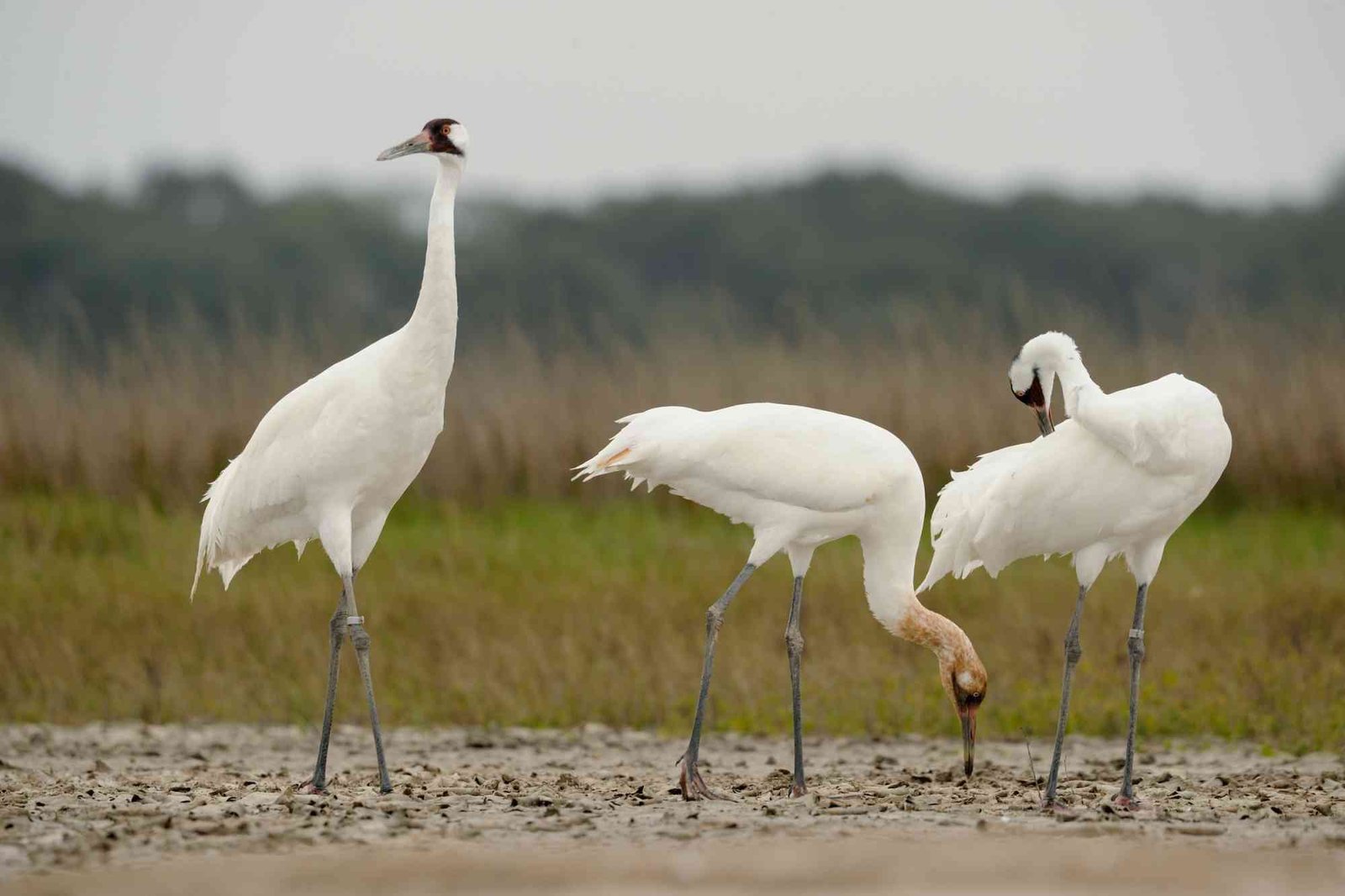Texas is a big place, but it’s getting smaller every day. Rising seas and powerful storms fueled by climate change are gnawing away at the Texas coast. On average, the shoreline is receding by more than four feet each year, with annual losses in some areas greater than 30 feet. Among the places hardest hit have been the national wildlife refuges that are meant to protect the beach and marsh habitats most vulnerable to coastal erosion.
All of Texas’s coastal refuges are vital for wildlife, but one is particularly significant for a critically endangered species. Aransas National Wildlife Refuge, located on the south-central coast, is the winter home of the last truly wild flock of whooping cranes.
The refuge helped pull whooping cranes back from the brink of extinction in the 1940s. The population of roughly 500 birds that migrates between Aransas and their breeding grounds in Canada’s Wood Buffalo National Park is vital to the species’ future. According to the International Whooping Crane Recovery Plan, this population will need to increase to 1,000 before the species can be downlisted from endangered to threatened under the Endangered Species Act.
Anticipating the threat climate change would pose to whooping cranes, U.S. Fish and Wildlife Service scientists modeled the impact of rising sea levels on the species’ winter habitat. They found, under a conservative scenario of one meter of sea level rise by 2100, so much habitat would be lost that currently protected areas would support only 465 cranes. Combined with the rapid urbanization of the Texas coast, this could make recovery of the species impossible.
Spurred by these results, Refuge System staff undertook a planning process to expand both Aransas and the nearby Big Boggy National Wildlife Refuge. The Land Protection Plans (LPP) finalized in April 2024 authorized the expansion of Aransas by up to 95,000 acres and Big Boggy by up to 55,000 acres. In addition to charting a path toward whooping crane recovery, these expansions would enable protection of important habitats for the threatened eastern black rail and a diverse array of migrating waterfowl. The expansions could also lay the groundwork for the reintroduction of Attwater’s prairie chicken, an endangered species that was extirpated from the Coastal Bend of Texas decades ago.
However, LPPs don’t protect any land; they only give the Refuge System permission to acquire it. Acquisition can only happen when landowners want to donate or sell, and sufficient funds are available. The LPPs outline criteria for prioritizing the types of land that should be added to the refuge, which include upland areas unlikely to be flooded. They also suggest that protection of corridors connecting the coast to inland areas could facilitate “marsh migration,” a process by which the expansion of marshes into currently dry habitats replaces marshland lost to erosion. In this way, strategic land acquisition could allow wildlife and plant communities — and the refuges themselves, effectively — to slowly retreat from the rising sea. But the land acquisition process is lengthy and uncertain. Given the rapid pace of coastal erosion, something must be done to buy time.
While they accept the long-term consequences of sea level rise, the managers of Aransas, Big Boggy, and other coastal Texas refuges are still trying to resist it in the short term. They are building stone breakwaters to reduce erosion and using waste sediment from U.S. Army Corps of Engineers dredging projects to build up marshes. The idea is to preserve existing habitat for whooping cranes and other species long enough to allow the expansion to play out. But this is only a stop-gap measure. The coastal reinforcements, built at considerable expense, will eventually go beneath the waves. Refuge expansion is the only sustainable solution.
The expansions of Aransas and Big Boggy are guided by science and focused on climate adaptation and ESA-listed species recovery. They are a model for how FWS should apply its limited land protection planning resources and are good examples of refuges that should be prioritized for allocation of land acquisition funds. Most of all, the situation on the Texas coast is a striking illustration of the foresight of the Refuge System’s strategic growth policy, which states “[FWS] will plan and direct the continued growth of the Refuge System in a manner that is best designed to accomplish its mission. To accomplish this goal, it becomes increasingly important for the Refuge System to add lands in a strategic and effective fashion[.]”
In a changing world, we cannot expect the Refuge System to achieve its conservation mission within unchanging refuge boundaries.
